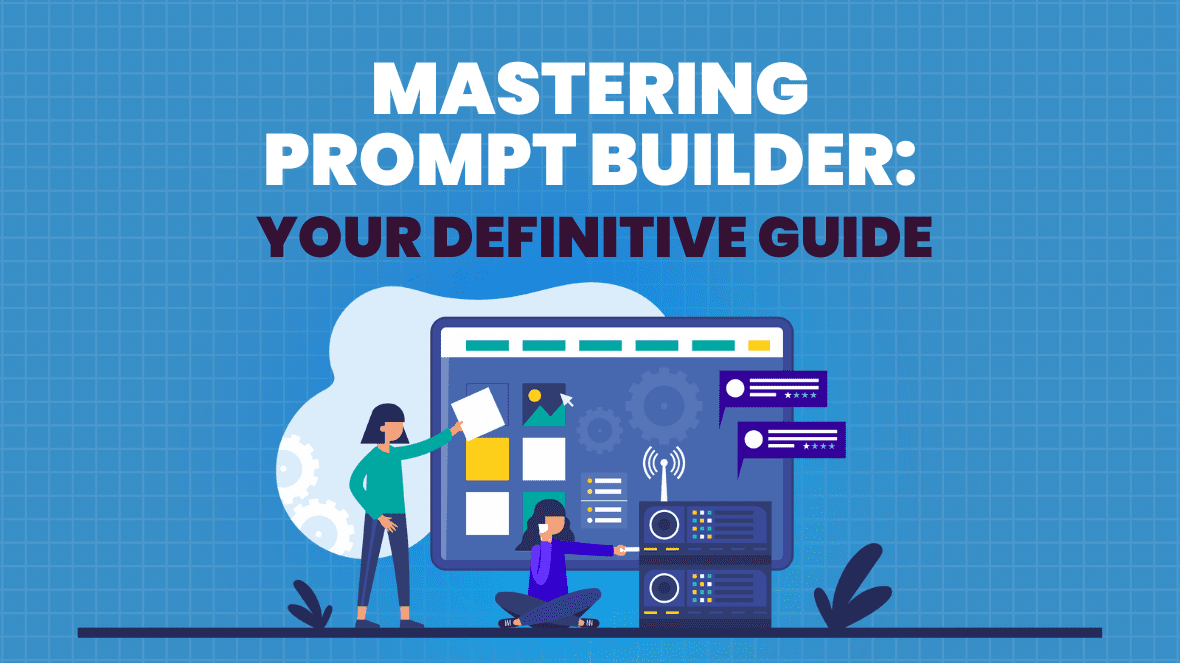Introduction
Welcome to the world of Prompt Builder, a revolutionary generative AI tool designed to enhance business tasks by seamlessly integrating prompts into workflows. In this guide, we will delve into the core AI concepts underpinning Prompt Builder, while also providing invaluable best practices and tips for creating, managing, testing, and refining prompt templates.
With the Spring ’24 release, we’re unveiling Prompt Builder—a revolutionary tool that not only tackles these challenges but also catapults administrators into a realm of enhanced efficiency and innovation.
Before delving into Prompt Builder, let’s clarify some essential terms
Prompt: Detailed instructions for Language Learning Models (LLMs), enhancing output accuracy with specific contextual information, data, instructions, and constraints.
Response: The output generated by an LLM, with response quality improving as more context and background information are provided.
Grounding: The process of providing LLMs with domain-specific knowledge and context, such as CRM data, to ensure the generation of relevant responses.
Hallucination: Inaccurate responses from LLMs due to the inability to access real-time or factual data, resulting in seemingly plausible but ultimately incorrect outputs.
Prompt Builder offers a range of benefits to administrators
Accelerated Task Completion: With customizable prompts embedded directly into the workflow, users can swiftly generate contextual content, expediting task completion.
Enhanced Data Security: Leveraging the Einstein Trust Layer, Prompt Builder ensures sensitive data from CRM and external sources is securely masked, maintaining compliance with Salesforce trust boundaries.
No-Code, Reusable Templates: Admins can effortlessly create and deploy prompt templates within the Einstein Trust Layer, enabling users to expedite tasks without the need for coding.
Personalized Prompts: By grounding prompts in business data from CRM, flows, and MuleSoft APIs, administrators can generate more accurate and personalized prompts tailored to specific user needs.
Seamless Deployment: Prompt Builder facilitates the deployment of generative AI across the CRM, allowing customization of standard templates, creation of single-click actions on record pages, and integration of prompt templates into copilots.
Key Components of Using Prompt Builder
Grounding of Data
The initial step involves determining if prompts need data from your Salesforce org to generate meaningful responses. Prompt Builder facilitates the dynamic grounding of prompt templates with Salesforce or Data Cloud data, ensuring personalized responses without compromising data security. Various resources for grounding data include merge fields, flows, and Apex, offering flexibility in accessing real-time or external data sources.
Creating and Managing Prompt Templates
Admins can create three types of prompt templates in Prompt Builder: Sales Email, Field Generation, and Flex templates. Each template type serves specific use cases, such as drafting personalized emails, populating fields with summary data, or incorporating records from multiple objects simultaneously. Prompt templates are grounded with relevant data using resources selected during setup, ensuring accuracy and relevance in generated responses.
Testing and Refining Prompt Templates
The iterative process of testing and refining prompt templates ensures optimal response quality. Admins can preview generated responses within the Prompt Template Workspace, evaluating aspects like goal completion, style, toxicity, relevance, consistency, bias, and factual accuracy. Refinement involves adjusting the template based on response evaluation, ensuring alignment with objectives and stakeholders’ expectations.
Deploying Prompts
Admins have complete control over deploying custom prompts to Salesforce users. Deployment methods include assigning appropriate permission sets, activating Dynamic Forms, or invoking prompt templates via flows, Apex, or Lightning web components. Each template type has specific deployment instructions, ensuring seamless integration into users’ workflows across the Salesforce platform.
What Makes a Good Prompt and Prompt Template?
- Clearly define the task for the Language Learning Model (LLM) using specific language like “Write a summary” or “Draft an email”.
- Provide relevant context to aid the LLM’s understanding, utilizing merge fields or data from flows.
- Specify desired linguistic style and tone, avoiding slang or technical jargon for consistency.
- Outline expectations for response content, format, and details to guide the LLM effectively.
- Define the role or persona the LLM should assume, incorporating participant information as needed.
- Establish rules and constraints to ensure accurate and appropriate responses, promoting fairness and inclusivity.
By incorporating these key considerations into prompt design and template creation, administrators can optimize the effectiveness and reliability of Prompt Builder, resulting in more accurate and personalized responses from the LLM.


